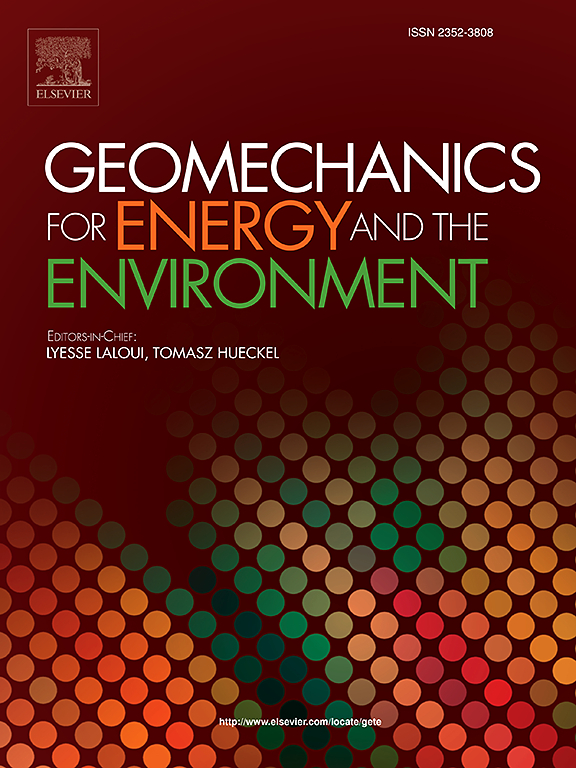Three-dimensional elastoplastic modelling for deformation property of sandstone with dilatancy
IF 3.7
2区 工程技术
Q3 ENERGY & FUELS
引用次数: 0
Abstract
Due to the development of plastic strains, the strain path within the meridian plane deviates from the reference line corresponding to elastic state. Similarly, under true triaxial stress conditions, the strain path within the deviatoric plane deviates from the reference line corresponding to the constant Lode angle. This deviation is attributed to the plastic shear strain associated with the Lode angle. To account for these phenomena, a novel three-dimensional elastoplastic constitutive model incorporating Lode angle is proposed to characterize the deformation behavior of sandstone. The yield and potential functions within this model incorporate parameters that vary with the plastic internal variable, enabling the evolution of the yield and plastic potential surfaces in both the meridian and deviatoric planes. The comparison between experimental data and the analytic solution derived from the constitutive model validates its reliability and accuracy. To examine the differences between yield surface and plastic potential surface, a comparison between the associated and non-associated flow rules is conducted. The results indicate that the associated flow rule tends to overestimate the dilatancy of sandstone. Furthermore, the role of Lode angle dependence in the potential function is explored, highlighting its importance in accurately describing the rock's deformation.
含剪胀砂岩变形特性的三维弹塑性建模
由于塑性应变的发展,子午平面内的应变路径偏离弹性状态对应的参考线。同样,在真三轴应力条件下,偏平面内的应变路径偏离恒定Lode角对应的参考线。这种偏差归因于与Lode角相关的塑性剪切应变。为了解释这些现象,提出了一种新的含Lode角的三维弹塑性本构模型来描述砂岩的变形行为。该模型中的屈服和势函数包含了随塑性内部变量变化的参数,使屈服和塑性势面在子午面和偏面上都能演变。实验数据与本构模型解析解的对比验证了本构模型的可靠性和准确性。为了检验屈服面和塑性势面之间的差异,对关联流动规律和非关联流动规律进行了比较。结果表明,相关的渗流规律倾向于高估砂岩的剪胀性。此外,探讨了矿脉角依赖性在势函数中的作用,强调了其在准确描述岩石变形中的重要性。
本文章由计算机程序翻译,如有差异,请以英文原文为准。
求助全文
约1分钟内获得全文
求助全文
来源期刊

Geomechanics for Energy and the Environment
Earth and Planetary Sciences-Geotechnical Engineering and Engineering Geology
CiteScore
5.90
自引率
11.80%
发文量
87
期刊介绍:
The aim of the Journal is to publish research results of the highest quality and of lasting importance on the subject of geomechanics, with the focus on applications to geological energy production and storage, and the interaction of soils and rocks with the natural and engineered environment. Special attention is given to concepts and developments of new energy geotechnologies that comprise intrinsic mechanisms protecting the environment against a potential engineering induced damage, hence warranting sustainable usage of energy resources.
The scope of the journal is broad, including fundamental concepts in geomechanics and mechanics of porous media, the experiments and analysis of novel phenomena and applications. Of special interest are issues resulting from coupling of particular physics, chemistry and biology of external forcings, as well as of pore fluid/gas and minerals to the solid mechanics of the medium skeleton and pore fluid mechanics. The multi-scale and inter-scale interactions between the phenomena and the behavior representations are also of particular interest. Contributions to general theoretical approach to these issues, but of potential reference to geomechanics in its context of energy and the environment are also most welcome.
 求助内容:
求助内容: 应助结果提醒方式:
应助结果提醒方式:


